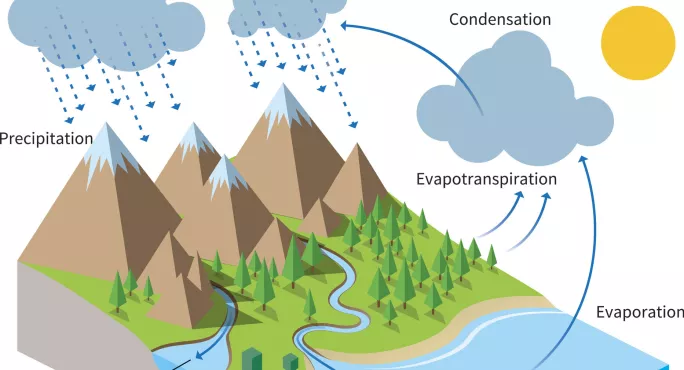Textbooks featuring diagrams of the Earth’s water cycle breed a “false sense of security” about the sustainability of water, academics have warned.
A team of international experts said the classic diagram used in geography and science lessons needed updating to show the effect of human interference.
Primary: The art project opening pupils’ eyes to climate change
Labour: Make climate change core part of curriculum
Opinion: The climate strikes show ‘Generation Snowflake’ is tougher than we thought
A study published in Nature Geoscience, with an additional comment in Nature, showed that in a sample of more than 450 water cycle diagrams in textbooks, scientific literature and online, 85 per cent showed no human interaction at all with the water cycle.
Only 2 per cent of the images made any attempt to connect the cycle with climate change or water pollution.
In addition, nearly all the examples studied depicted verdant landscapes, with mild climates and abundant freshwater.
The researchers, from the University of Birmingham in the UK and Brigham Young University and Michigan State University in the US, said that leaving humans out of the picture “contributes to a basic lack of awareness of how humans relate to water on Earth - and a false sense of security about future availability of this essential and scarce resource”.
They have drawn up new diagrams showing a more complex picture, including meltwater from glaciers, flood damage caused by land use changes, pollution and sea level rises.
Professor David Hannah, Unesco chair in water sciences at the University of Birmingham, said: “The water cycle diagram is a central icon of hydro science, but misrepresenting the ways in which humans have influenced this cycle diminishes our awareness of the looming global water crisis.”
“By leaving out climate change, human consumption, and changes in land use we are, in effect, creating large gaps in understanding and perception among the public and also among some scientists.”
Professor Ben Abbott from Brigham Young University said that water diagrams are “stuck in the 17th century”.
He said: “It’s hard to find a diagram of the carbon or nitrogen cycle that doesn’t show factories and fertilisers. However, our drawings of the water cycle are stuck in the 17th century.”
“Better drawings of the water cycle won’t solve the global water crisis on their own, but they could improve awareness of how local water use and climate change have global consequences.”





